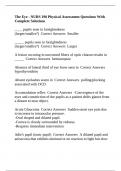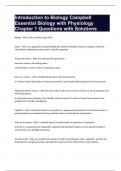Exam (elaborations)
NURS 5315: Advanced Pathophysiology UTA Exam 1 LATEST UPDATED 2024
- Module
- Institution
NURS 5315: Advanced Pathophysiology UTA Exam 1 LATEST UPDATED 2024 Atrophy Correct Answer: E. Cells decrease in size P. Still functional; imbalance between protein synthesis and degradation. Essentially there is an increase in the catabolism of intracellular organelles, reducing structural comp...
[Show more]











